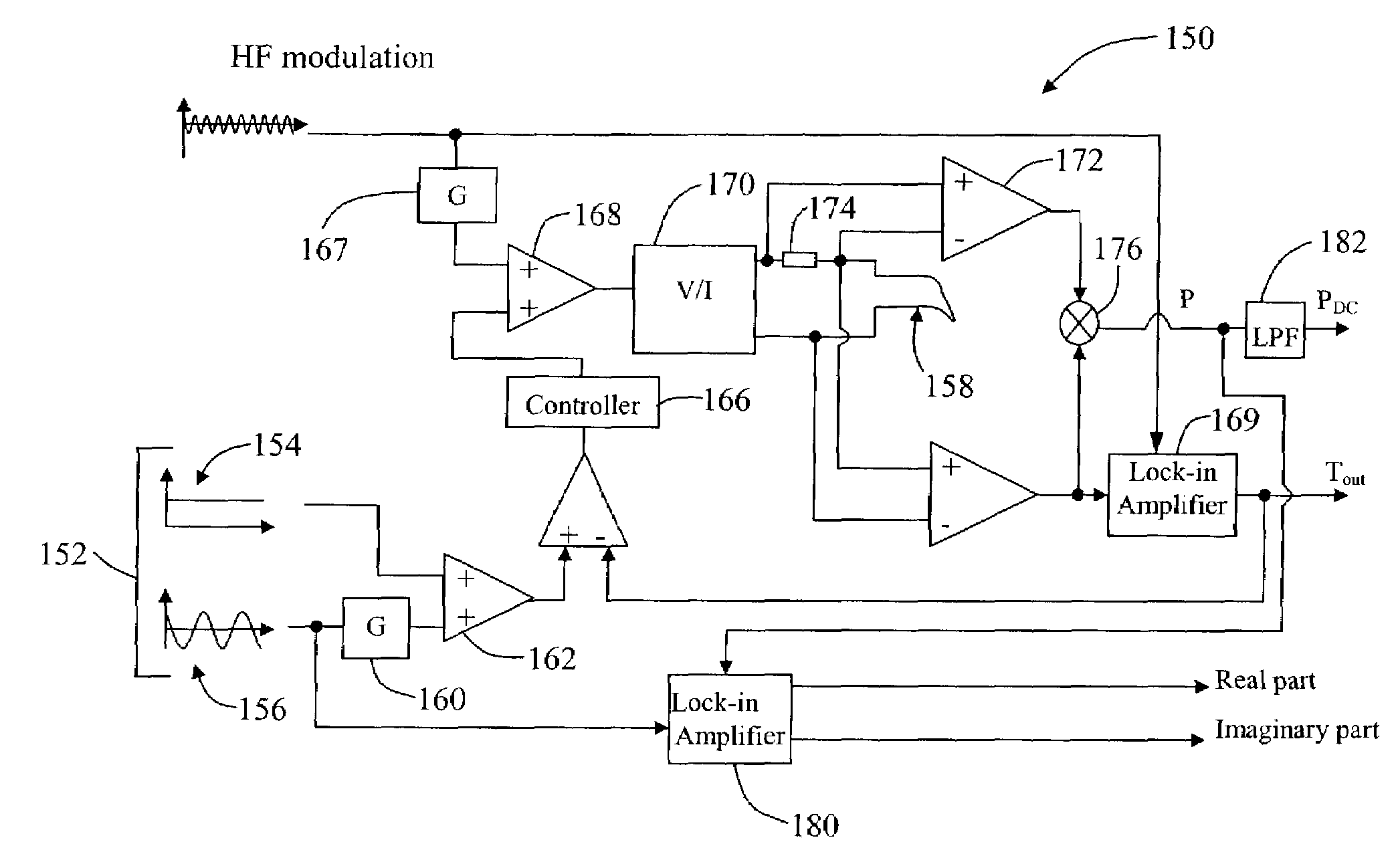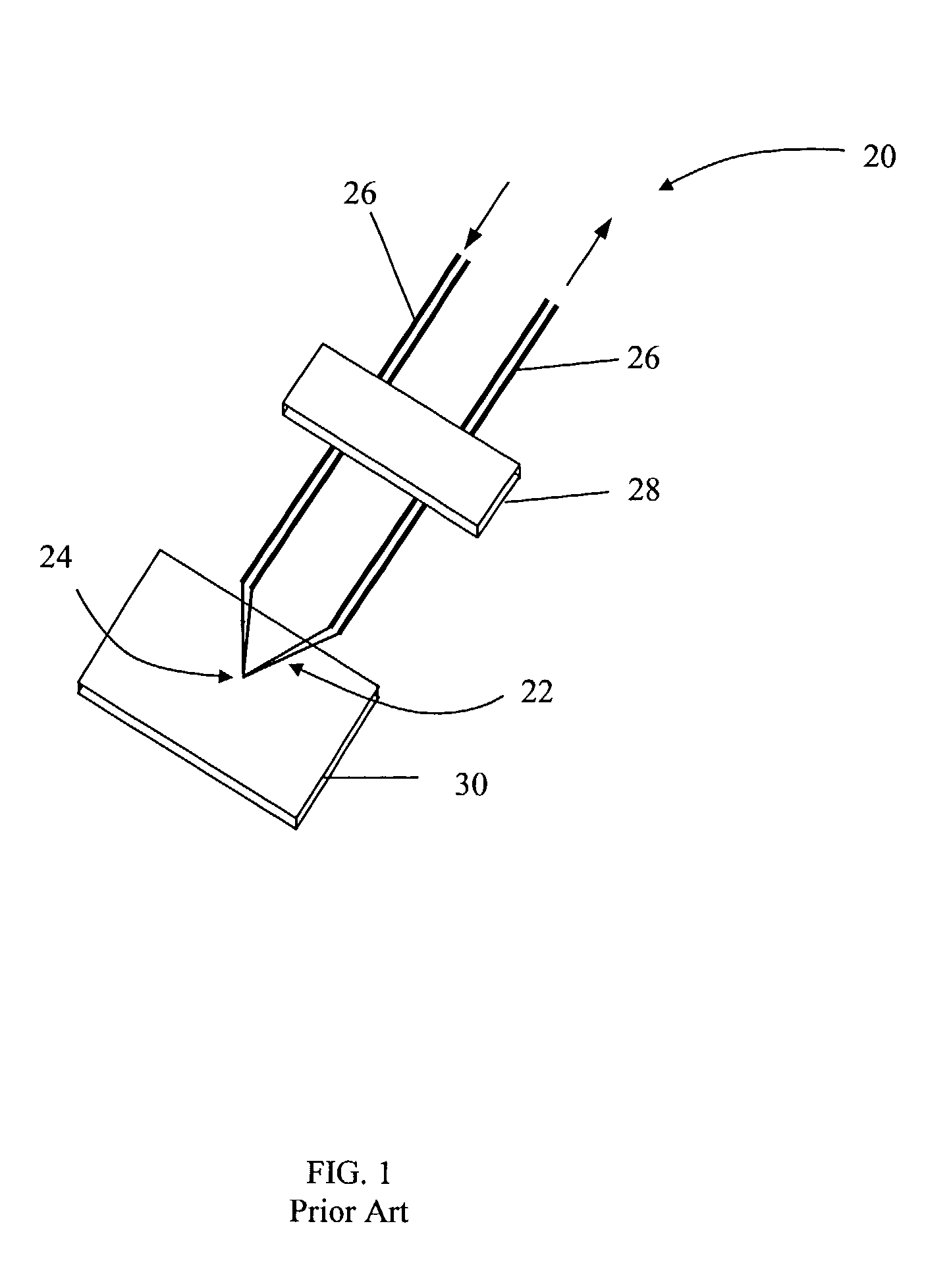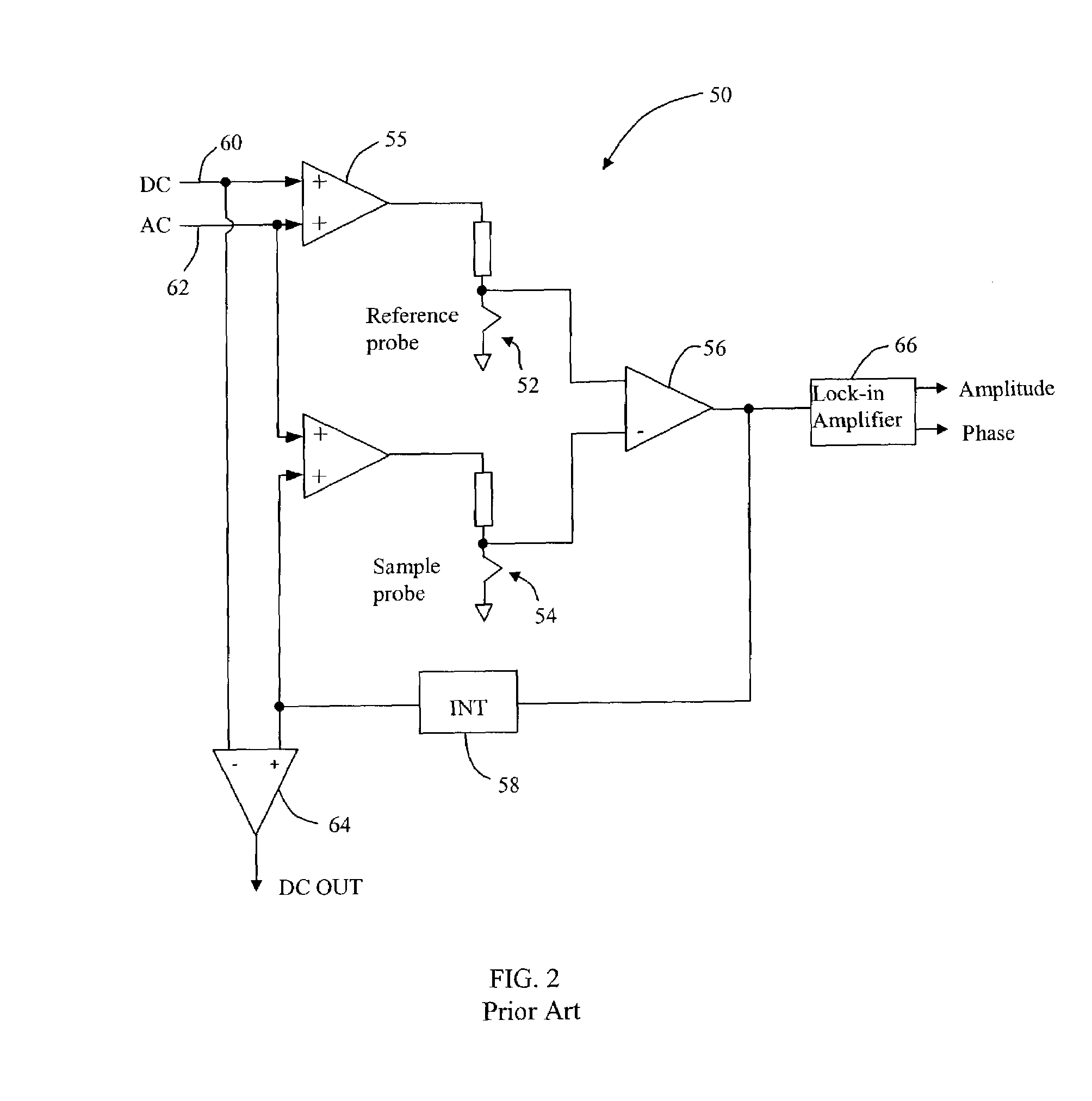Scanning thermal probe microscope
- Summary
- Abstract
- Description
- Claims
- Application Information
AI Technical Summary
Benefits of technology
Problems solved by technology
Method used
Image
Examples
Embodiment Construction
[0056]The preferred embodiments are directed to a scanning thermal probe microscope for providing thermal analysis using an atomic force microscope. The scanning thermal microscope can image thermal properties of a region of a sample and perform localized thermal analysis at a point of interest. The microscope may combine the ability to obtain a typical AFM image (such as of surface topography) together with thermal images. In this regard, thermal images and typical AFM images may be obtained simultaneously. Depending on experiment criteria, the user typically will select a location of interest for performing local thermal analysis. Notably, with respect to appropriately positioning the probe for performing a localized thermal measurement, a positioning system is required. One such apparatus is shown and described in U.S. Pat. No. 6,530,268, and U.S. Ser. No. 09 / 803,268, both assigned to the present assignee, the contents of which are hereby expressly incorporated by reference.
[0057...
PUM
 Login to View More
Login to View More Abstract
Description
Claims
Application Information
 Login to View More
Login to View More - R&D
- Intellectual Property
- Life Sciences
- Materials
- Tech Scout
- Unparalleled Data Quality
- Higher Quality Content
- 60% Fewer Hallucinations
Browse by: Latest US Patents, China's latest patents, Technical Efficacy Thesaurus, Application Domain, Technology Topic, Popular Technical Reports.
© 2025 PatSnap. All rights reserved.Legal|Privacy policy|Modern Slavery Act Transparency Statement|Sitemap|About US| Contact US: help@patsnap.com



